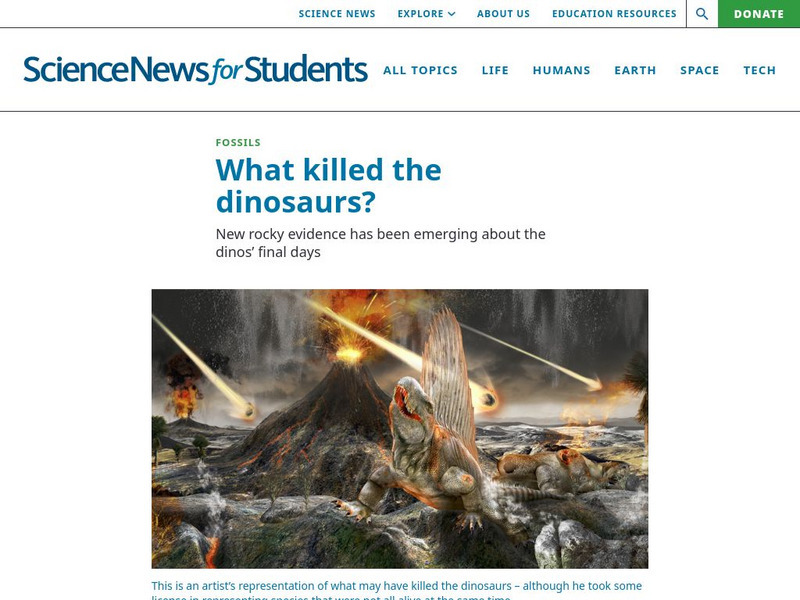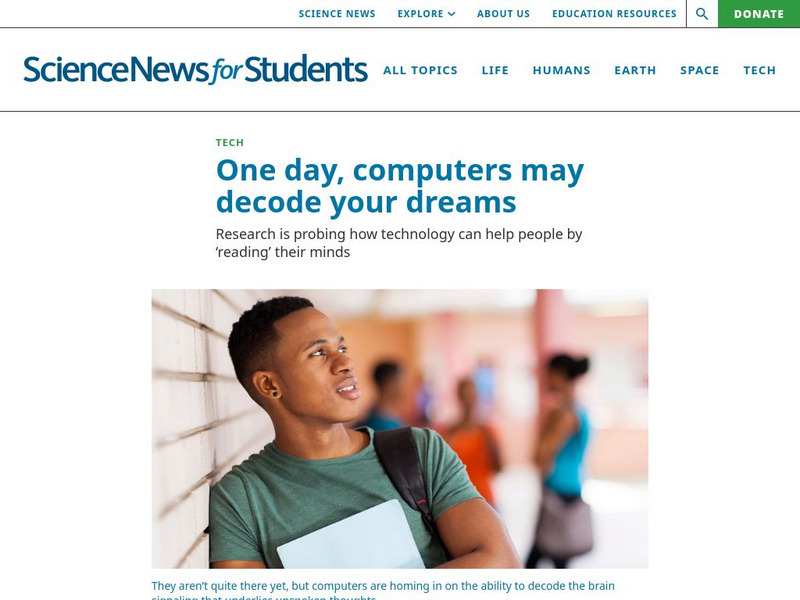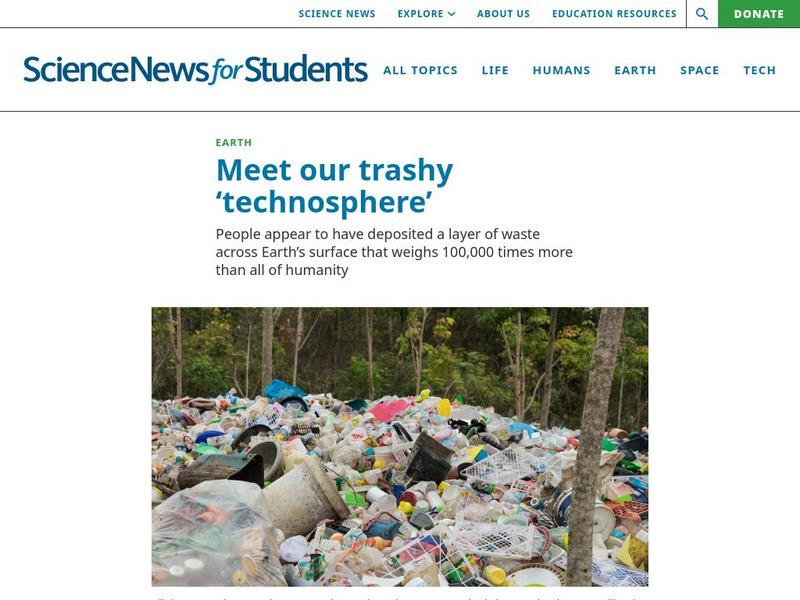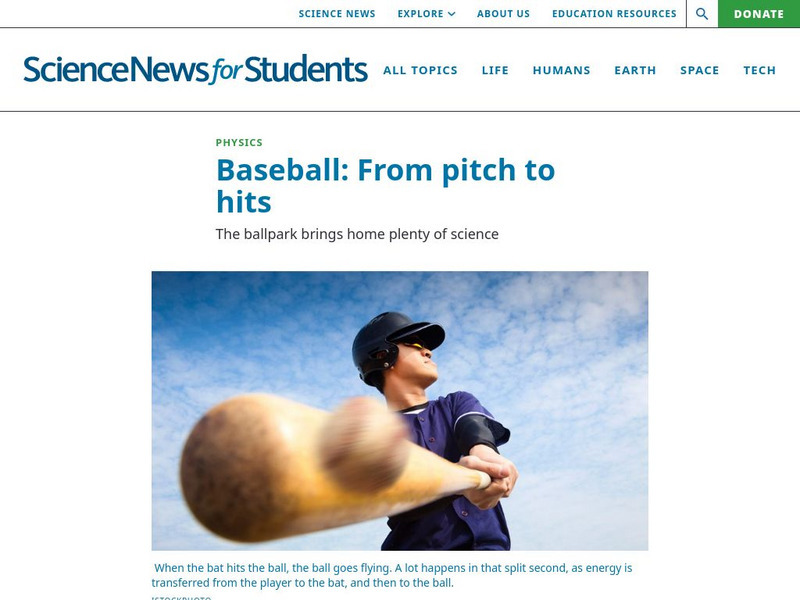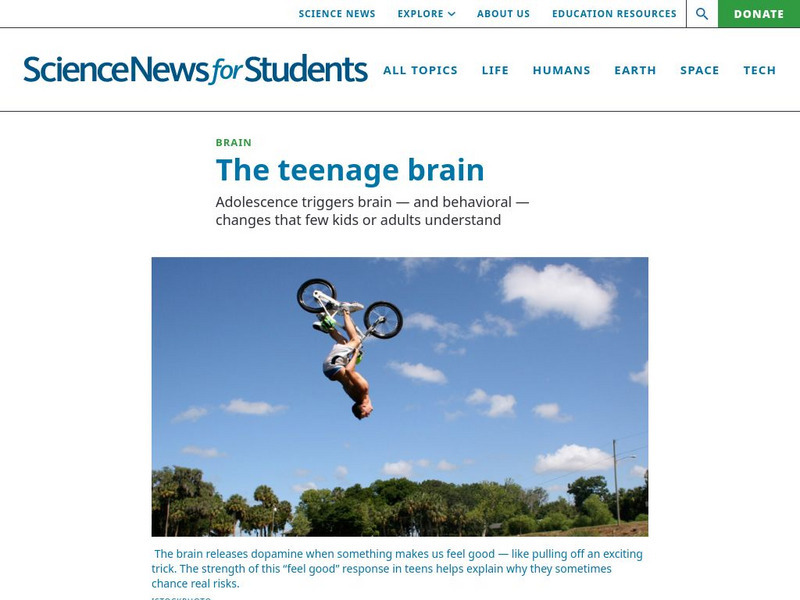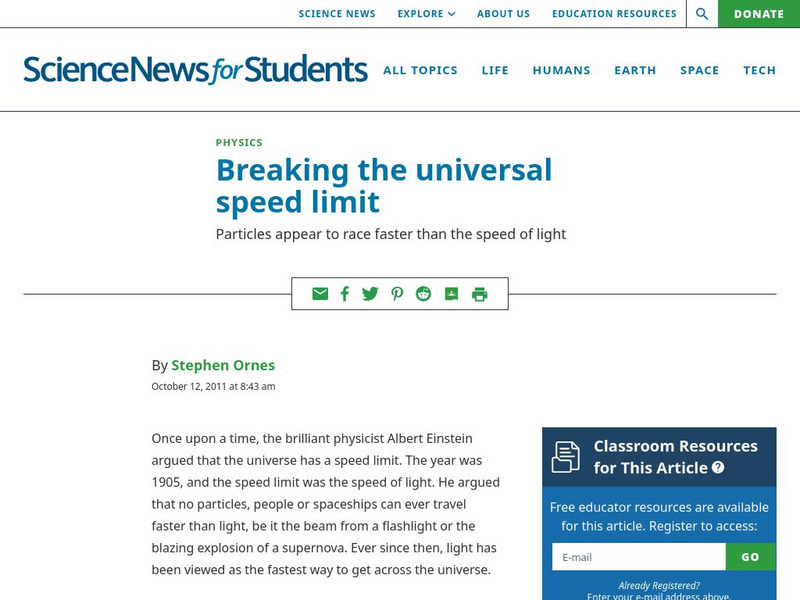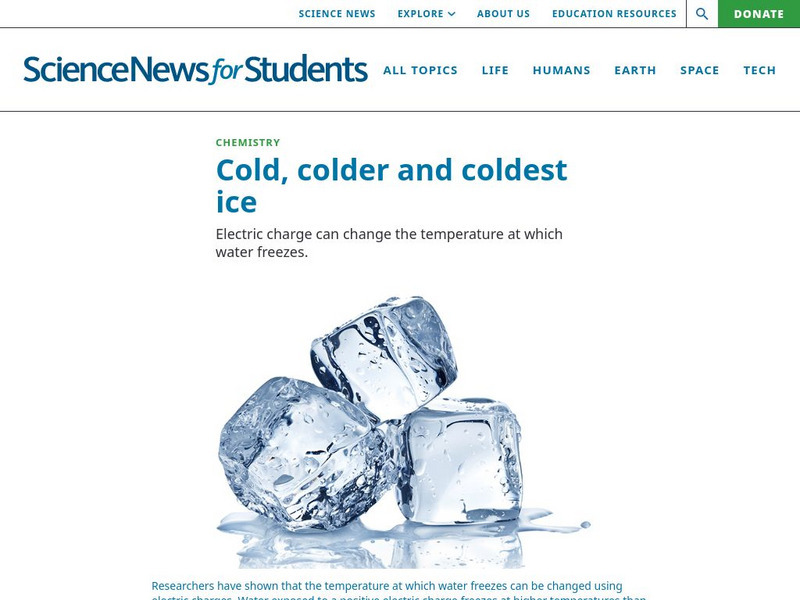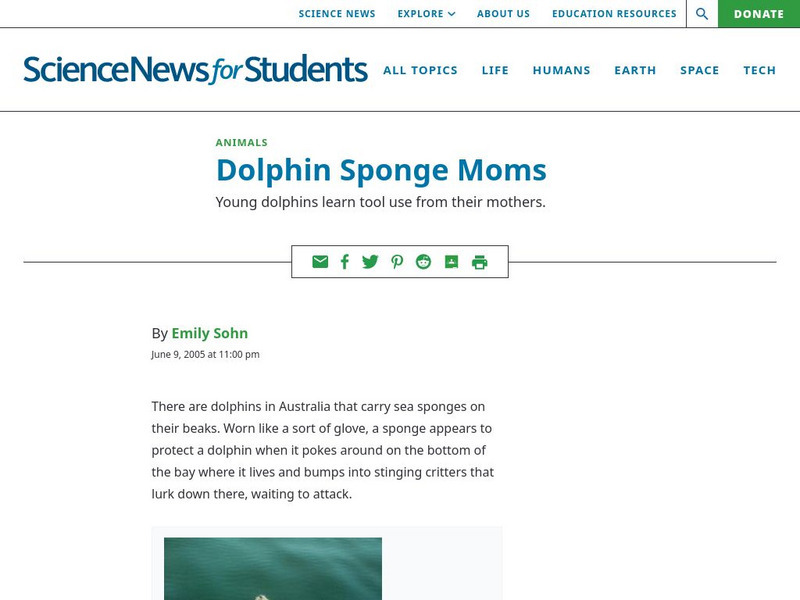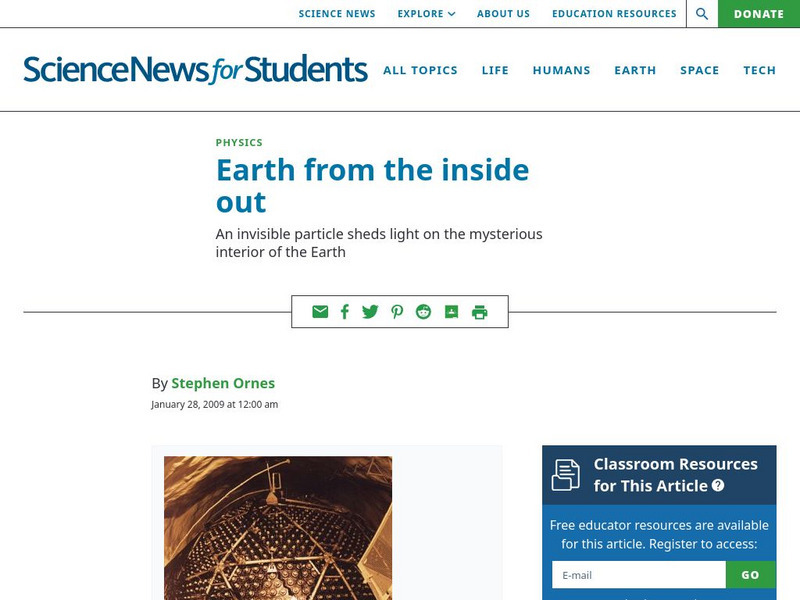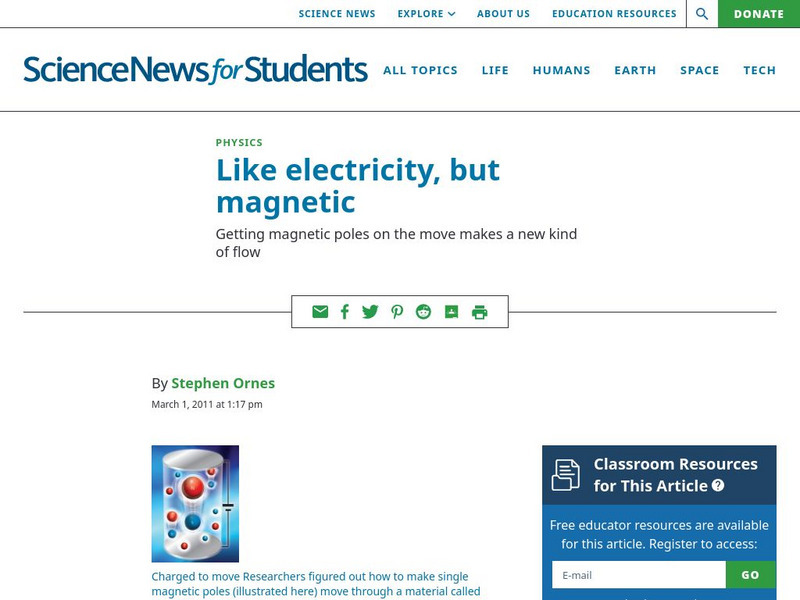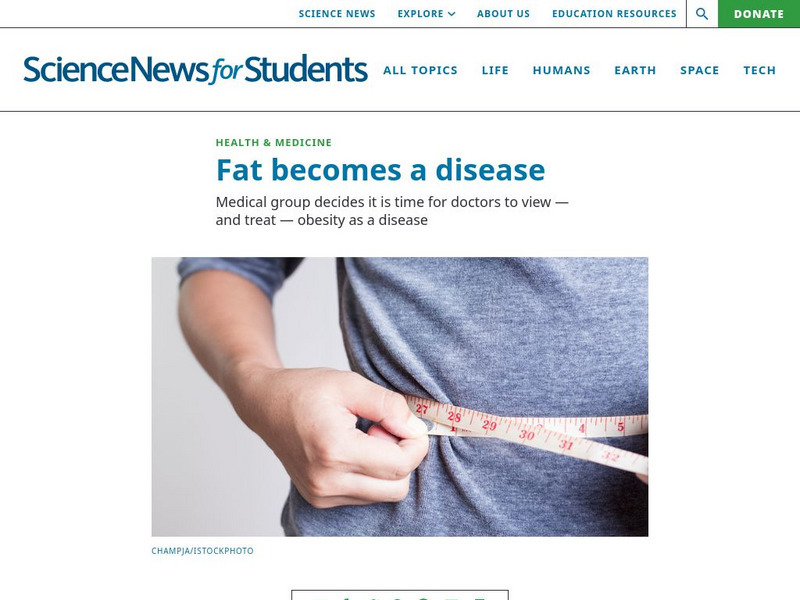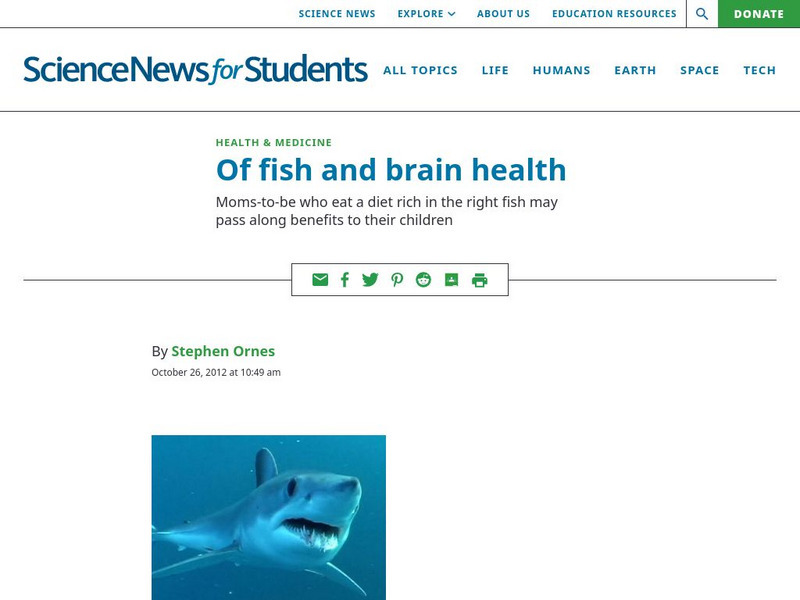Society for Science and the Public
Science News for Students: Violence Spreads Like a Virus
New research shows that the friends of violent teens are much more likely to become violent themselves. Discover news about this human behavior spreading amongst teens.
Society for Science and the Public
Science News for Students: Climate Change Could Stall Atlantic Ocean Current
When carbon dioxide levels rise, the currents slow, which leads to temperatures dropping because of the lack of water movement. Europe could suffer as a result of this change.
Society for Science and the Public
Science News for Students: What Killed the Dinosaurs?
Researchers are beginning to find data implicating that an asteroid impact and supervolcanoes might have been the beginning of the end of dinosaurs on Earth.
Society for Science and the Public
Science News for Students: One Day, Computers May Decode Your Dreams
Wouldn't it be cool to read someone's mind? Maybe? Neuroscientists at the University of Pittsburgh are developing a mind-reading computer system to hep people with nerve damage send messages from the brain to parts of the body to create...
Society for Science and the Public
Science News for Students: 'Smart' Sutures Monitor Healing
A medical innovation that might eliminate prolonged infections and speculated healing. Check out this new idea of 'smart' stiches that notify caregivers if something is going wrong during the healing process.
Society for Science and the Public
Science News for Students: Meet Our Trashy 'Technosphere'
People are creating a layer of debris and disturbance called the technosphere. A new study estimates just how truly massive it is.
Society for Science and the Public
Science News for Students: Baseball: From Pitch to Hits
This article explains some of the science behind baseball. Also includes a list of vocabulary words from the article.
Society for Science and the Public
Science News for Students: The Teenage Brain
Teens and adults have different brains. Find out what makes the teenage brain so unique.
Society for Science and the Public
Science News for Students: Ash Blast
Discusses work done by scientists looking at the potential health risks from the April 2011 volcanic eruptions in Iceland, which sent clouds of ash across Europe. [May 8, 2011]
Society for Science and the Public
Science News for Students: Bad for Breathing
A study provides new clues as to why some respiratory diseases are linked to air pollution.
Society for Science and the Public
Science News for Students: Bandages That Could Bite Back
Describes research to create bandages that contain an antibiotic. The bandages fool bacteria into attacking them, which releases the antibiotic and attacks the bacteria.
Society for Science and the Public
Science News for Students: Big Rocks' Balancing Acts
Discusses research on balanced rock formations in California, which scientists believe can show information about severe earthquakes in the past, and whether certain areas are prone to them. [October 19, 2011]
Society for Science and the Public
Science News for Students: Breaking the Universal Speed Limit
Describes research into whether neutrinos travel faster than the speed of light.
Society for Science and the Public
Science News for Students: The Buzz About Mosquitoes
As annoying as mosquitoes are, they are an essential part of the web of life. However, they also carry and spread diseases that can kill people. See how scientists are researching mosquitoes to help control the spread of these diseases.
Society for Science and the Public
Science News for Students: Cleaning Clothes Dirties Oceans
Describes research into the pollution caused by plastics that are hidden in the fibers of synthetic clothing, and eventually end up in the ocean after laundering. Cites other research that discovered plastic pellets found throughout the...
Society for Science and the Public
Science News for Students: Sea Anemone Clone Wars
Sea anemones look like such peaceful creatures, but find out how aggressive they can be!
Society for Science and the Public
Science News for Students: Cold, Colder and Coldest Ice
Describes research into the freezing point of water and how scientists have frozen it at different temperatures, depending on the electric charge.
Society for Science and the Public
Science News for Students: Color Changing Robot
Scientists at Harvard University recently invented a robot shaped like the letter "X" that can change its color to blend in with its surroundings. While this robot is currently limited to operating within a laboratory, it could...
Society for Science and the Public
Science News for Students: Deet Confuses Mosquitoes
Discusses why DEET insect repellant is effective including research showing how a mosquito's sense of smell is confused by DEET, so it doesn't recognize a potential food source such as human skin.
Society for Science and the Public
Science News for Students: Dolphin Sponge Moms
Some bottlenose dolphins in Australia use a sponge (kind of like a glove) to protect the dolphin when it pokes around on the bottom of the bay. Do they figure this trick out on their own or do they inherit this ability or is it something...
Society for Science and the Public
Science News for Students: Earth From the Inside Out
Describes scientists attempts to use geoneutrinos to see 'inside' the Earth.
Society for Science and the Public
Science News for Students: Like Electricity, but Magnetic
Describes research using magnetic monopoles that could one day lead to devices powered by magnetism or magnetricity, the name scientists have given this type of energy.
Society for Science and the Public
Science News for Students: Fat Becomes a Disease
Article reports on a recent statement from the American Medical Association that obesity should be treated as a disease. Includes a vocabulary list of words from the article.
Society for Science and the Public
Science News for Students: Of Fish and Brain Health
Research has shown that what a mother eats while pregnant has a significant affect on the health of her child. A study, reviewed in this article, examines the pro's and con's of including fish in expectant mothers' diets.




